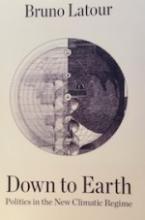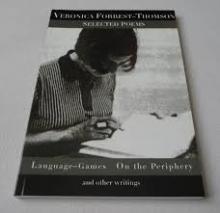
Welcome to a brief experiment in poetry and medicine focusing on poetic form (the villanelle) and the newly developed vaccine for COVID19. The following outline explains a little bit about how to think like a scientist (first) and how to think like a poet (second). This experiment in poetry and medicine is intended to help scientists learn about poetry and poets about science through writing villanelles addressing the COVID19 vaccines.
 Few people will campaign for an alternative vision of black holes or magnetic inversion, but we know from experience that about soils, vaccines, earthworms, bears, wolves, neurotransmitters, mushrooms, water circulation, or the composition of air, the smallest study will immediately be plunged into a full-scale battle of interpretations. The Critical Zone is not a classroom; the relationship between researchers and the public is anything but purely pedagogical.
Few people will campaign for an alternative vision of black holes or magnetic inversion, but we know from experience that about soils, vaccines, earthworms, bears, wolves, neurotransmitters, mushrooms, water circulation, or the composition of air, the smallest study will immediately be plunged into a full-scale battle of interpretations. The Critical Zone is not a classroom; the relationship between researchers and the public is anything but purely pedagogical.
Down to Earth: Politics in the New Climatic Regime by Bruno Latour
A brief introduction to how scientists think and write...
Reading is research and research is reading. Scientists read one another's work for inspiration just like poets. Originality is only meaningful to the extent that a research paper is solving a problem that other researchers have defined and are themselves exploring; that is why this experiment requires reading multiple scientific papers. The aim is not merely writing about science, but to learn to write the way a scientist might. This is not a superficial approach to science poetry that borrows a strange image or some unusual diction to mystify the reader, instead it is an experiment in how thinking like a scientist alters a poet and a poet's thinking about science itself.
Here is an article from the prestigious scientific journal Nature, written for a general audience, about the Covid-19 vaccinations now available in the United Kingdom. I would recommend reading at least two other articles as research for writing your villanelle. One article from a peer-reviewed scientific journal such as Nature or Science and one from a major new source such as the Guardian or New York Times. Why an even split between the two you might ask? Because you are looking into the implications of the research for the general public as well as future research.
The New York Times Science Section
A brief introduction to poetic form and a sample villanelle...
What does the villanelle form gives us as poets that other forms do not? Villanelles rely on a pair refrains that make limitations and routine explicit; they often tend towards obsession. The relationship between the two refrains is fraught. The meaning and the distnace between the refrains changes as the villanelle unfolds. This poetic forms contains a strict rhyme and repetition scheme; it has a lot of rules and can feel oppresive to compose and to read. These particular feelings that villanelles tend to illicit in poets and readers are similar to how people are feeling during the pandemic. The villanelle is a highly structured form and composing a villanelle often feels like fitting the pieces in a puzzle together. This experiment is intended to help the writer explore their experience of the pandemic and the COVID19 vaccine fit into the villanelle form. Below is an example of a villanelle.
Not Pastoral Enough
by Veronica Forrest-Thomson
homage to William Empson
It is the sense, it is the sense, controls,
Landing every poem like a fish.
Unhuman forms must not assert their roles.
Glittering scales require the deadly tolls
Of net and knife. Scales fall to relish.
It is the sense, it is the sense, controls.
Yet languages are apt to miss on souls
If reason only guts them. Applying the wish,
Unhuman forms must not assert their roles,
Ignores the fact that poems have two poles
That must be opposite. Hard then to finish
It is the sense, it is the sense, controls,
Without a sense of lining up for doles
From other kitchens that give us the garnish:
Unhuman forms must not assert their roles.
And this (forgive me) is like carrying coals
To Sheffield. Irrelevance betrays a formal anguish.
It is the sense, it is the sense, controls,
“Unhuman forms must not assert their roles”.
Source: Collected Poems (Shearsman Books, 2008)
Villanelle Template
- 19 line poem
- the first and third lines rhyme
- the first and third lines repeat throughout the poem
- the first and third lines alternate as the last lines of every stanza
- the second line of every stanza rhymes with the second line of every stanza in the poem
- the first 5 stanzas consist of 3 lines
- the last stanza consists of 4 lines
- the first and third lines of the first stanza are the third and fourth lines
Breaking the Villanelle Rules
- contemporary poets tend to cheat a little bit and modify the refrains
- only using the last word of the line as a refrain (like a sestina)
- only following the rhymes scheme
- using words that sound the same, but have different meanings to varying the refrains
- contemporary poets sometimes drop the rhyme scheme
- creating a cycle of villanelles using 3 refrains to yield 3 poems
- so the first villanelle would use refrains 1&2
- the second villanelle would use refrains 2&3
- the third villanelle would use refrains 1&3 or 3&1
- Resources from the Poetry Foundation on the Villanelle form and many many examples!
Go Forth. Write Villanelles!
Now go forth and think interesting thoughts and write villanelles that will provoke interesting thoughts about the COVID19 vaccines in others!
